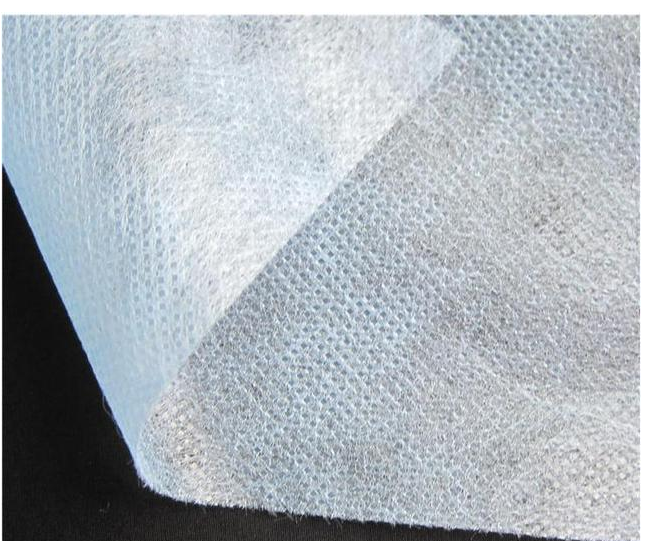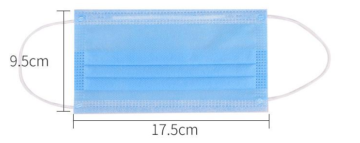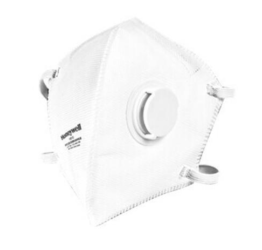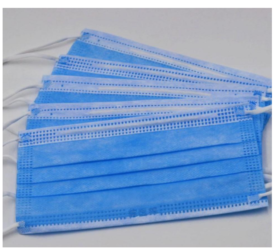How to identify the melt blown fabric?
Melt blown cloth with polypropylene as the main raw material, fiber diameter can reach 0. 5-10 microns, these ultra-fine fibers with a unique capillary structure increases the number of fibers per unit area and surface area,
so that melt blown cloth has good air filtration, is a better material for masks, in large and small medical institutions, in the earthquake, flooding in the affected areas,
in the high incidence of SARS, avian flu and H1 N1 virus In the season, meltblown filter paper plays an irreplaceable role with its strong filtration performance.
Meltblown nonwoven fabric is mainly used for: Meltblown fabric is commonly known as the heart of the mask and is the middle filter layer of the mask, which has good filtering, shielding,

adiabatic and oil-absorbing properties and is an important raw material for the production of masks. Therefore, the qualified meltblown cloth can meet the role of isolating the virus, and the people can feel relieved when they use it.
If the goods do not pass the test, and sold on the market, there is not only no guarantee that there may be harm to the human body, at present, no matter what goods are good need to pass the test to be able to enter the mall Tmall Mall,
quality inspection report is not only to enter the name of the mall to provide a qualification, but also to the product has played a role of icing on the cake, making more consumer confidence to buy and use your products.
The significance of the product itself is more than a guarantee, but also increased the product itself a degree of trust.
Contents
1、Mask testing for single-use
Testing standards for YY/T 0969-2013 “single-use masks” testing items are mainly appearance, structure and size, nose clip, mask band, bacterial filtration efficiency, ventilation resistance,
microbial indicators, residue, biological evaluation. Among the microbial indicators mainly detects bacterial colony count,
coliform, Pseudomonas aeruginosa, golden staphylococcus, soluble streptococcus, fungi. The second biological evaluation items are cellularity, skin irritation, delayed hypersensitivity reactions, etc.

2, with surgical mask detection
The testing standard is YY/T 0469-2011 “with surgical mask” testing standards, testing items are airtightness,
particle filtration efficiency, filter particle type, bacterial filtration efficiency, permeability requirements high.
3、Testing with protective masks
Testing standards for with masks GB19083-2010 with protective masks technical requirements; testing items are airtightness, particle filtration efficiency,
filter particle type, bacteria filtration efficiency, permeability, surface moisture resistance, flame retardancy, gas resistance, should not have to call the valve, etc.

4、Common N95 mask testing
Testing standards for GB2626-2006 call protective equipment since the filtered anti-particle caller, flame retardancy, leakage rate, exhalation resistance, gas resistance, dead space, airtightness, etc.
5、PM2.5 protective mask detection
Testing standards for T/CTCA 1-2015 “PM2.5 protective masks”, TAJ 1001-2015 “PM2.5 protective masks”.
Testing items are mainly apparent detection, formaldehyde, pH, temperature and humidity pretreatment, decomposable carcinogenic direction ammonia dyes,
microbial indicators, filtration efficiency, total leakage rate, call resistance, mask lacing and body connection force, dead space, etc.

6、Knitted mouthpiece detection
Testing standards for FZ/T 73049-2014 “knitted masks”.
Testing items are mainly appearance quality, internal quality, pH, formaldehyde content, decomposable carcinogenic aromatic amine dye content,
fiber content, soap fastness, water fastness, saliva fastness, rubbing fastness, perspiration fastness, air permeability, odor, etc.
The second method
1、Meltblown cloth will melt but not burn when it meets fire, and paper will burn when it meets fire.
2, meltblown cloth has static electricity, the meltblown cloth torn into – strip, will obviously feel the electrostatic adsorption effect, but also a meltblown cloth adsorption on stainless steel, can adsorb confetti or easy to absorb on the wall. But depending on the level of protection of the mask may
3、Meltblown cloth generally has a flat, smooth surface, no trachoma, crystal point black spot impurities, the whole cloth is very dense.

4, meltblown cloth without any odor. If there is an odor, then do not wear, because the material may be a peroxide residue.
5, meltblown cloth is soft, the surface is not easy to rub silk, tearing when there is toughness, not very brittle.
Usually wear masks can be used to remove the mask to check the next, to avoid encountering fake masks, or wear no defense against viruses.
The results. The good meltblown cloth is white and not transparent because of enough grams, and the spunbond nonwoven fabric on both sides looks distinct.
If the difference is obvious, but obviously thin, it is a small gram of meltblown cloth, the filtration effect is poor.
The third method
1, there is a test instrument is best, if not then use the sweat hair on the arm or leg close, if attracted is with static electricity.
Jin Gong fan has been more than 200 meltblown cloth production line supporting the Roots fan, which is to find out the experience,
there are many meltblown cloth production line without electrostatic standing pole, the production of meltblown cloth without static electricity,
the appearance of no difference, the naked eye can not tell, such meltblown cloth on the tiny particles of the filtering efficiency of even 50 percent are not.
2, mask filtration in addition to mechanical blocking, there is electrostatic adsorption.
Fiber filter material is a common material for dealing with pollution and purifying air and water.
Its dust capture mechanism mainly relies on Brown diffusion, retention, inertial collision, direct interception and other mechanical blocking effect,
but this mechanical blocking effect on the particle size less than 1μm particle filtration effect is very poor, can not play a purifying role.
In addition to the original mechanical blocking effect, in the process of air filtration to increase electrostatic adsorption,
relying on Coulomb forces directly attract charged particles in the gas phase and capture them, or induce neutral particles to produce polarity and then capture them,
you can more effectively filter the sub-micro particles in the gas carrier phase,

greatly enhancing the filtration efficiency, while the air resistance will not increase. This is known as high efficiency and low resistance filtration materials. Electret materials have exactly this property.

 By Coco Ho
By Coco Ho

